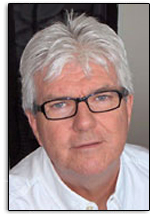A few decades ago, anyone with a notepad or camera could have looked under any rock and chronicled a vivid tale of environmental despoliation and disregard. Only a few journalists and authors, to their credit, were able to recognize a looming disaster hiding in plain sight.
But at least it was in plain sight. Now, the nature of environmental news is often profoundly different. Biologists are more likely to talk ecosystem integrity than the problems facing polar bears or some other individual charismatic species. The subject of sprawl is as diverse as the landscape it encompasses. Concerns about air pollution have migrated from the choking plumes of old. Today research is tackling the smallest of particles that penetrate deep into our lungs and to the invisible heat-trapping greenhouse gases (GHGs) linked to global warming led by innocuous carbon dioxide - the bubbles in your glass of beer. Scientists say the main cause of recent warming is smokestack and tailpipe emissions. Projections of the pace and ramifications of future climate changes remain as muddy as the mix of clouds, particles, and gases emitted from these pipes. This mixture determines how much sunlight reaches the earth's surface and the land's albedo.* It is that medley which sets the global thermostat.
The challenges encountered in meaningfully translating such issues for the public today are enormous for several reasons. Some relate to the subtlety or complexity of the pollution and ecological issues that remain after glaring problems have been addressed. Others relate to effective, well-financed efforts by some industries and groups that oppose pollution restrictions to amplify the uncertainties in environmental science. They exploit the tendency of journalists to seek at least two sides to every issue. The danger of this approach is that it can effectively perpetuate confusion, contention, and ultimately public disengagement followed by broad inaction.1
On the other side of the debate, environmental groups are not innocent in this regard. In some cases, they have focused media attention on their own pet issues by going beyond the data and magnifying the risks of, say, cancer or abrupt climate change. Some scientists, expressing frustration with the public's indifference to long-term threats, have gone beyond their areas of expertise and portrayed global warming as a real-time catastrophe.
The groundswell really grew some teeth in the spring of 2006 as documentary films, books, and magazine cover stories endeavoured to directly link the outbreak of hurricanes. This was particularly evident with the ferocity of hurricane Katrina compared to the slow buildup of heat in the world's oceans from anthropogenic activities. Time magazine proclaimed, "Be worried. Be very worried." It was also around this time that former U.S. Vice President Al Gore was in the thick of his multimedia climate campaign with his work An Inconvenient Truth.
Many climate experts said that while there was a growing likelihood that humans were helping shape storm patterns and the like, the very complexity of the climate system made it impossible to blame humans unequivocally.
Between the depictions of global warming as an unfolding catastrophe and as a non-event lies what appears to be the dominant and still troubling view: that the buildup of carbon dioxide and other long-lived GHGs poses a threat significant enough to warrant actions to limit future harms to coastlines. In fact, a few years ago, eleven national academies of science, including the National Academy, spelled out these findings in a letter to world leaders. The National Academy of Sciences Committee on America's Climate Choices concluded: "the environmental, economic, and humanitarian risks of climate change indicate a pressing need for substantial action to limit the magnitude of climate change and to prepare for adapting to its impacts."2
Many experts explain that it is urgent to act promptly to curb emissions and limit future risks. Because of population growth and increased energy use in developing countries, even the most optimistic scenarios project that concentrations of GHGs will continue to climb through 2050.
The problem is that the processes that winnow and shape the news have a hard time handling the global warming issue in an effective way. The media seem either to overplay a sense of imminent calamity or to ignore the issue altogether because the climate is not black and white or on a timescale that feels like news. This approach leaves society like a ship swinging on its anchor at the mercy of wind and currents.
What is lost in the media coverage is a century of study and evidence that supports the keystone findings: Human-generated gases are trapping heat, and the on-going building of this GHG blanket adds to warming, shrinks the world's frozen zones, raises seas, and shifts climate patterns. The snag for journalists reporting on climate news is that disinformation generated on both sides of the issue can trip up even earnest, skilled reporters. And the sheer complexity of climate science and policy questions poses a huge challenge in media that are constrained by deadlines and a limited supply of column inches and newscast minutes. On top of these hurdles is the persistent lack of basic scientific literacy on the part of the public.
Nonetheless, some of the biggest impediments to effective climate coverage seem to lie not out in the examined world but back in the newsroom and in the nature of news itself. Overcoming these impediments is a persistent and daunting task. No one should expect to pick up a daily paper of hear on the TV news anytime soon and get the headline that takes climate science across some threshold of definitiveness that will suddenly trigger public agitation and policy action - and if such a story does appear, it should be looked at skeptically.3
Most journalists of my generation were raised in an age of imminent calamity. We grew up in a landscape where environmental problems were easy to identify. The shores of the Don River in Toronto, for example, were coated with adhesives, dyes, and paint, depending on which riverfront factory was nearest. Added to this was human refuse making most of the river completely unswimmable. Across the continent, smokestacks were unfiltered. Gas was leaded. Los Angeles air was light brindle. Recycling consisted of little more than residents rinsing and flattening empty food cans and driving some distance to a tiny drop-off depot. Albeit so, recycling programmes are rife with logistics issues and non-compliance. Attempts today are underway in earnest, however, to make recycling more effective and worthy.
I'm glad to say things began to really change. New words crept into the popular lexicon - smog, acid rain, toxic waste. At the same time, citizens gained a sense of empowerment as popular protests shortened a war. Then a new target appeared - pollution. Earth Day was something new and vital and was capturing a broad audience. Governments created laws and agencies aimed at restoring air and water quality and protecting wildlife. Remarkably, those laws stuck and began to work. I, for one, am at once sad at where we've come from and glad for where we're apparently heading.
*the fraction of solar energy reflected from the Earth back into space. It is a measure of the reflectivity of the earth's surface.
1 Andrew C. Revkin. "Climate Change as News," Climate Change-What It Means for Us, Our Children, and Our Grandchildren. MIT Press, Cambridge, Massachusetts (2014): 228
2 Ibid
3 Ibid











